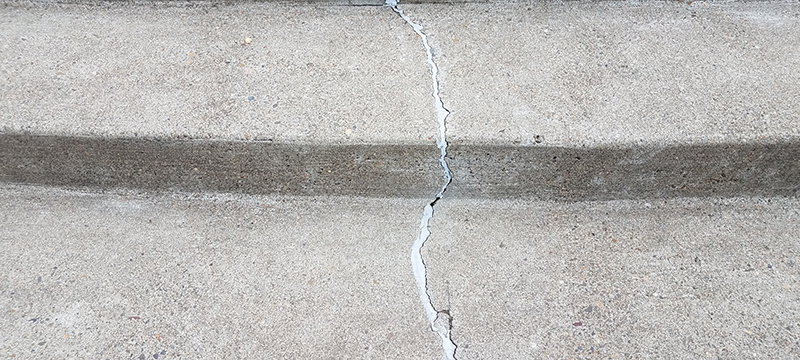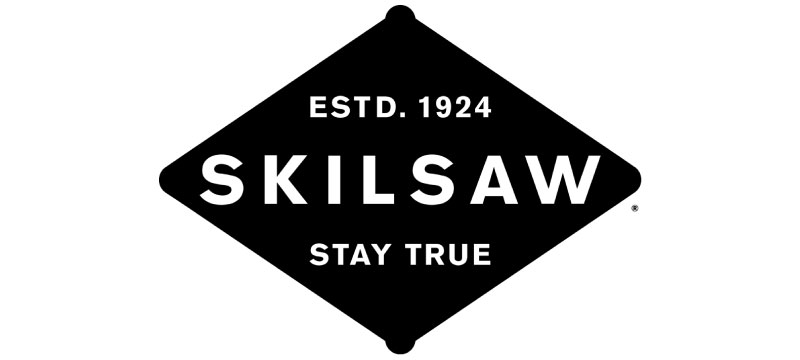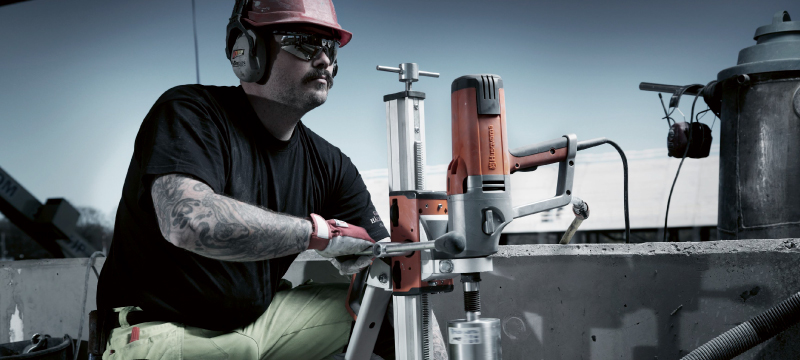Cracks in your concrete garage, walkway, or other concrete surfaces are not only a tripping hazard but can inherently compromise your home’s curb appeal. These imperfections can also make your garage more vulnerable to external effects, reduce its mechanical resistance, and accelerate the structure’s aging process. Fortunately, it’s easy to fix concrete cracks to keep your home safe and aesthetically pleasing.
Concrete is tough and can last for decades, but eventually, it may develop cracks, holes, and gaps. If your garage floor has started to age, it pays to make the necessary repairs as soon as possible. Otherwise, what seems like a small gap or crack today could grow into a bigger and more expensive problem.
While sometimes it takes a professional to work perfectly with concrete, anyone can repair concrete cracks. Here is how to easily fix concrete cracks, whether narrow or wide.
Clean the Crack
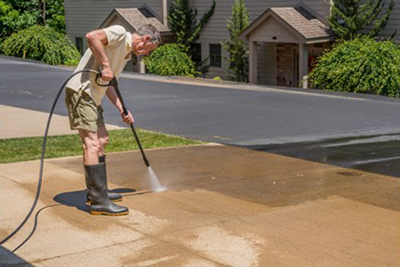
First, clean the surface in and around with a wire brush to remove loose material and prepare the area for repair. For narrow cracks, eliminate loose debris and particles from the crack and the nearby surface using a wire brush. Then use a concrete patch or masonry concrete crack filler to repair the gaps.
Use a chisel or sledgehammer to cut the edges of the crack and chip away any damaged or crumbling concrete in larger concrete cracks. Then clean the damaged surface with a wire brush, concrete cleaner, and water to remove any fine debris.
Note that this work involves a lot of dust, so you may need to apply a tarp under the work area to facilitate cleanup. Moreover, ensure you wear the appropriate protective gear.
Level the Crack
Use a level to check the slab and detect the low areas. Mix the compound with aggregate and water according to the manufacturer’s specifications. Once the leveler is mixed, apply it to the cracked surface and use a trowel to spread it to create a smooth transition. Then allow the product to cure properly so you can walk through it within four to six hours.
Run a putty knife across the sealed area to remove excess compound. Then further resurface the two sides of the crack to match the surrounding concrete surface, then let the compound dry as directed.
After smoothing the caulked surface, clean your putty knife with mineral spirits or another appropriate cleaner before setting the epoxy. While this is best known for repairing cracked floors, it can also be used to seal cracks in walls.
Fill the Crack

Once you level both sides of the crack, fill the concrete crack with your preferred repair product. Essentially, concrete floors cannot be fixed with concrete. You’ll be better off using concrete repair mixes, which are readily available locally or online. The most commonly used repair products include mortar patches and acrylic/epoxy material.
Mortar Patch
A mortar patch is suitable for wider concrete floor cracks and other larger imperfections. Fortunately, it’s pretty simple to create your own mortar patch. You just need to mix one part of Portland cement, some water, and three parts of masonry sand to make a thick paste. Alternatively, you can buy ready-made mortar patches locally or online.
The next step is to dampen the cracked area before applying the patch with either a putty knife or a mason’s trowel. While at it, thrust your putty knife or trowel into the patch to remove any air pockets that might have formed. This will ensure the patch fully engulfs the entire crack. Then resurface the area to level it with the surrounding concrete.
Allow the mortar mix to dry for at least two hours, and then cover the sealed area using plastic sheeting to lock in moisture. Spray water on the filled area every day until the surface hardens up.
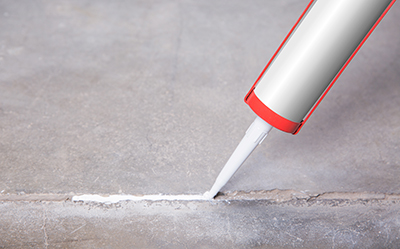
Acrylic/Epoxy Material
For concrete cracks one-eighth inches or narrower, use acrylic/epoxy material mixed according to the manufacturer’s directions. You can use either a putty knife or a mason’s trowel to apply the acrylic or epoxy material onto the cracked surface.
Press down the material into the gap before smoothing the surface to match the surrounding concrete. Keep in mind that different materials cure differently, so it’s important to follow the directions provided in your selected product.
Conclusion
By following these steps, you can successfully repair your garage floor that has cracks and even prevent future concrete problems. Note that you may need to repeat some of these steps more than once to achieve the intended results. In addition, follow product instructions and wear the proper protective gear when handling chemicals.

